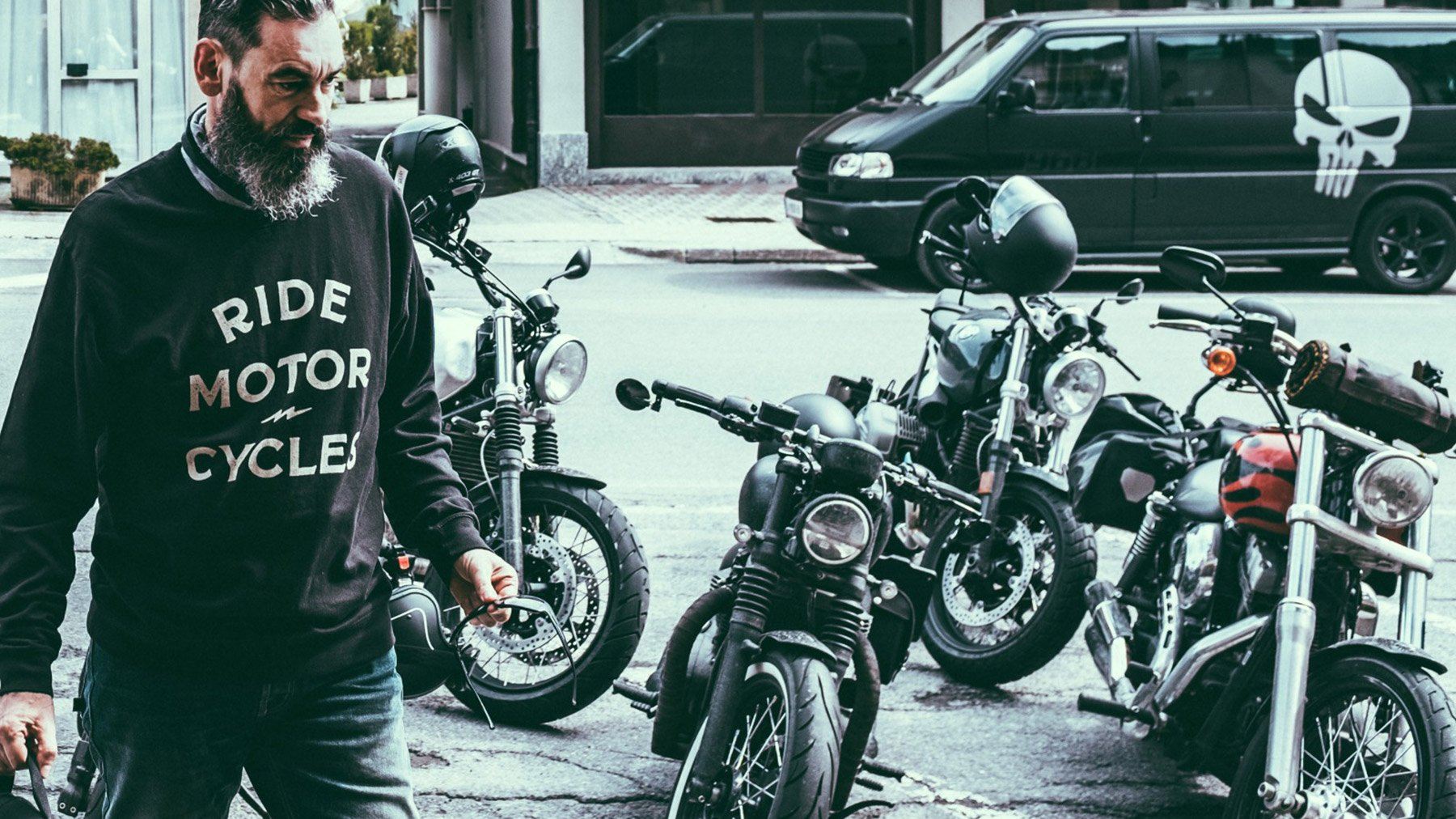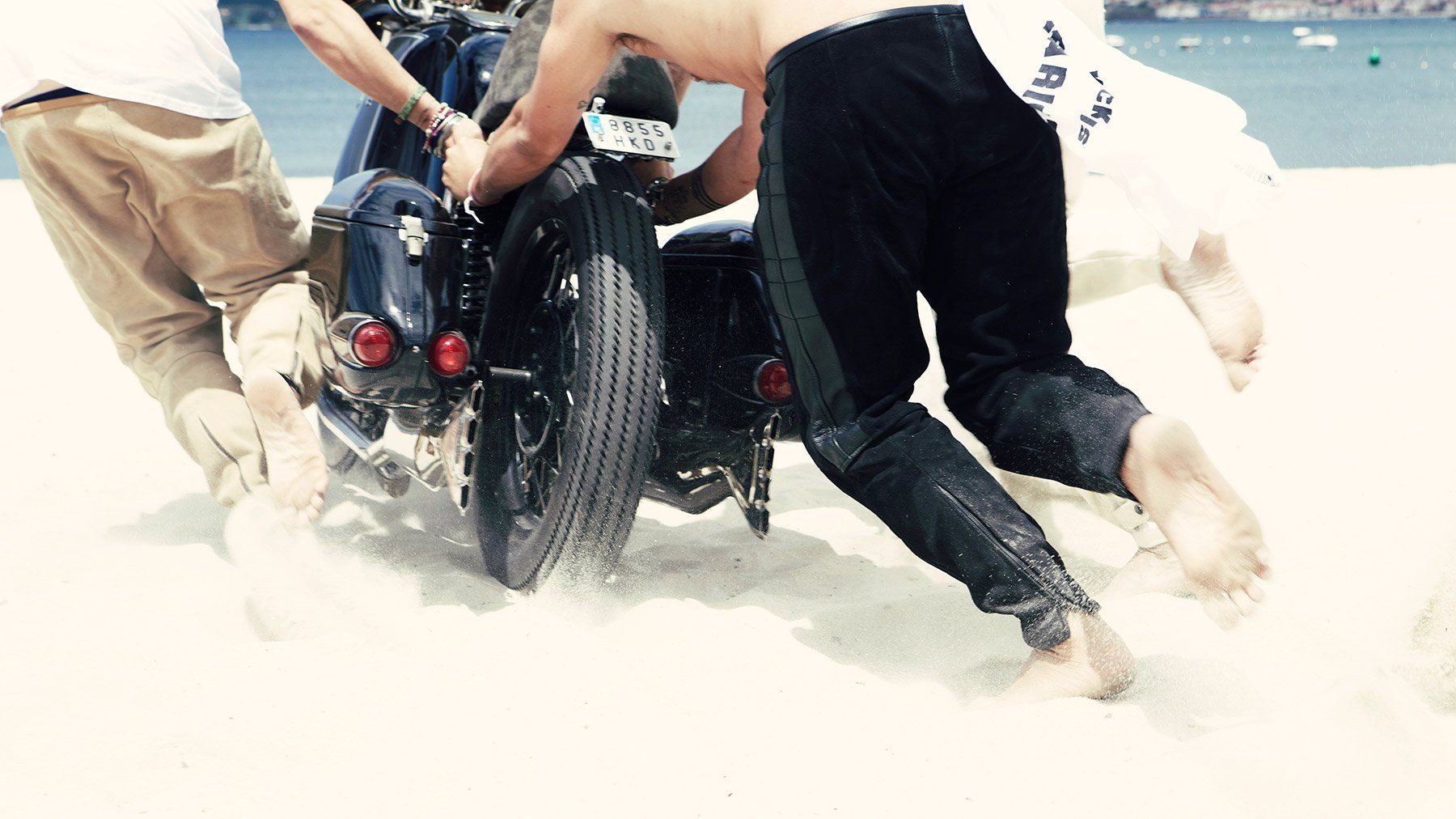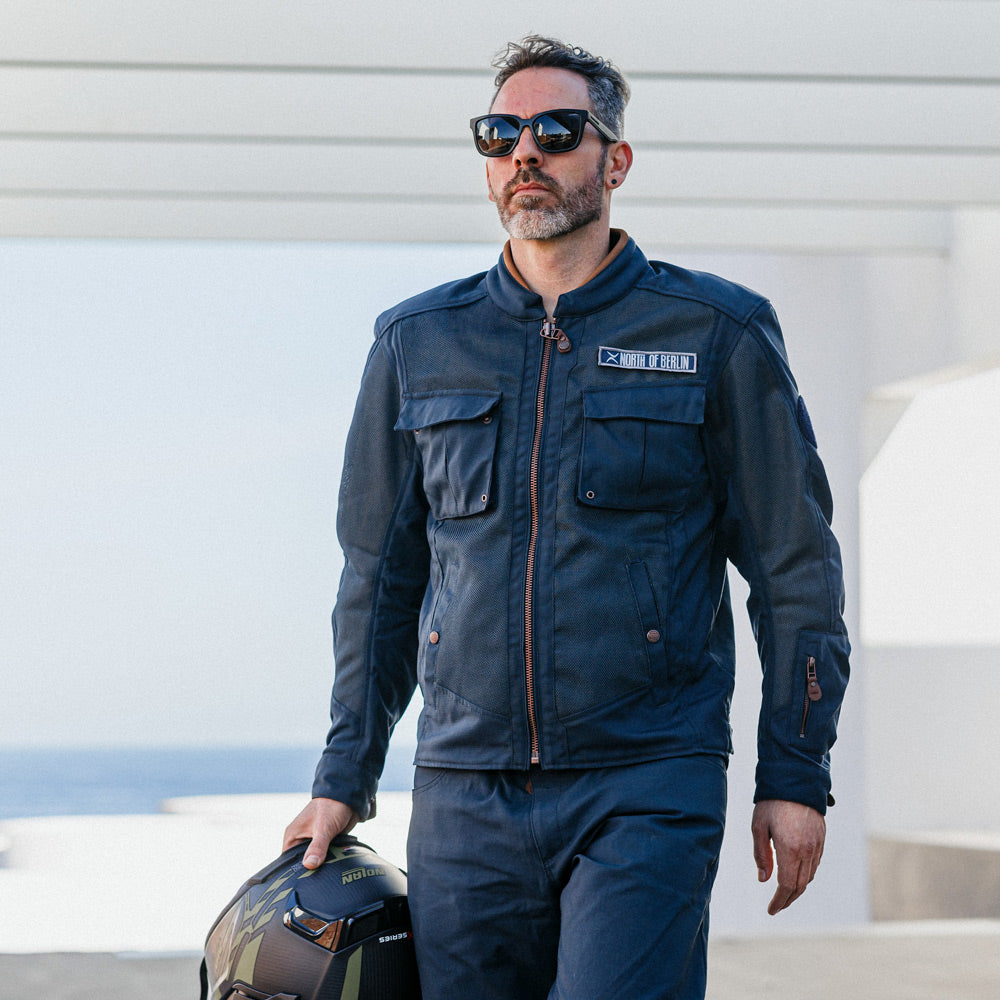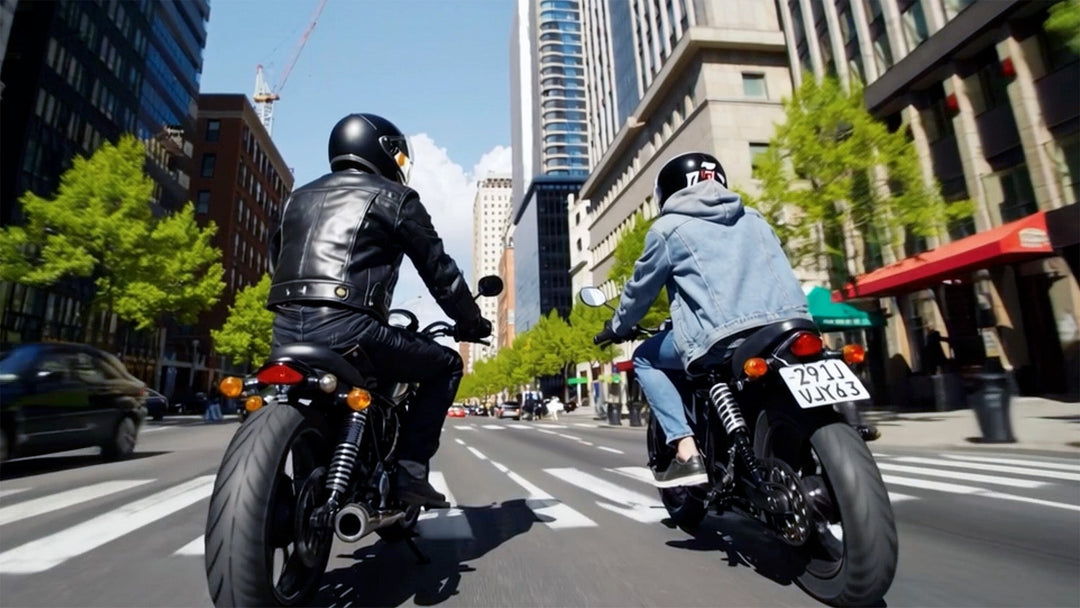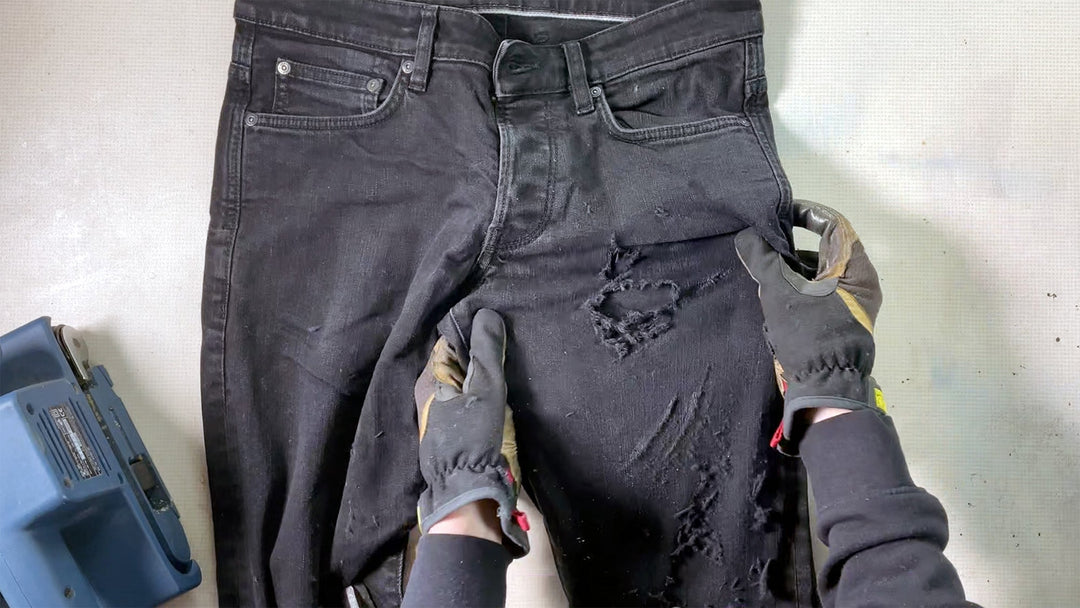The first thing that hits the ground in a fall is your motorcycle gear. It is your protective layer and, in the worst case, has to be able to withstand a lot. High quality, tear and abrasion resistance are therefore the most important criteria when buying protective motorcycle clothing.
For many, leather still offers the best protection. However, more and more manufacturers are now using technical fibers in the production of textile motorcycle clothing. These make the fabrics as strong as leather and sometimes even more resistant. At the same time, good style and a comfortable fit don't fall by the wayside.
But be careful, just because something looks safe doesn't mean it is safe. In particular, cheap clothing is presented better in advertising than it actually is. It is all the more important to know the differences between abrasion-resistant materials in order to be able to decide for yourself which level of protection to choose.
The three most popular materials are Cordura®, Kevlar® and Dyneema®. But Armalith® is also frequently used.
Combines the advantages of synthetic and natural fibers - Cordura®:
The starting material for the production of Cordura® is a simple nylon fabric. A special treatment combines and reinforces the advantages of synthetic and natural fibers in the material. The result is a fabric that is much more robust, tear and abrasion resistant than the original material. In addition, Cordura® is water-repellent and dries quickly.
Cordura® is one of the most versatile fabrics and is relatively light compared to other synthetic fibers such as Kevlar®. The texturing, i.e. roughening the smooth surface of the nylon, also makes it more comfortable to wear.
But despite its many protective properties, Cordura® alone is not enough to provide the necessary protection even at high speeds. That's why two other materials come into play here: Kevlar® and Dyneema®.
From the battlefield to the streets - Kevlar ® :
Originally, Kevlar® was mainly used in the military environment to protect soldiers from attacks with firearms or a knife. But it quickly became clear that the synthetic para-aramid fiber can also protect people from injuries in other areas.
Kevlar® is an incredibly strong material due to its chemical structure. The fibers are spun so tight that it is almost impossible to separate them, creating a strong protective barrier against cuts or punctures. Other protective features are the high abrasion resistance, tear resistance and temperature resistance.
In protective motorcycle clothing, a layer of Kevlar® is sewn under the outermost layer. Unfortunately, often and especially with cheaper models, only within protection zone 1. So with trousers, for example, only on the knees and hips. In the event of a fall, only these areas are protected. With higher quality, the entire garment is usually reinforced with Kevlar®. This includes the seams. Although these models cost a little more, they are also of higher quality and offer much more protection.
A disadvantage of Kevlar® is that it is not very breathable. This means that on hot summer days you start to sweat quite quickly. On cold days, on the other hand, the additional layer insulates and protects against the wind.
Bringing style and protection together – Dyneema ® :
Due to its special structure, Dyneema® is 15 times stronger than steel and therefore the strongest fiber material in the world. It is used for all sorts of things throughout the industrial landscape and thus found its way into motorcycle clothing.
In terms of strength and durability, it far outperforms Kevlar®. Despite its strength, it is incredibly light and also breathable. This makes motorcycle protective clothing made of Dyneema® very comfortable to wear, especially in summer, compared to Kevlar®.
Another advantage is that Dyneema® can be woven into other fabrics. This enables manufacturers to design lightweight and stylish motorcycle clothing that still provides sufficient protection. In addition, by weaving in the Dyneema® fibers, you do not need a second layer, as with Kevlar-reinforced motorcycle clothing.
Space technology for the road - Armalith ®
Previously it was only used in space technology. Today, Armalith® can also be found in protective motorcycle clothing. It is made by merging cotton fibers and UHMWPE fibers.
This exclusive technology produces comfortable fabrics with a core structure that gives them the mechanical properties of leather. Thus, Armalith® is resistant to abrasion, snagging or tearing and offers exceptional comfort in all seasons.
|
Cordura® |
Kevlar® |
Dyneema® |
Armalite ® |
|
Per:
|
Per:
|
Per:
|
Per:
|
|
Cons:
|
Cons:
|
Cons:
|
Cons:
|
Our conclusion:
Among the technical fibers, Dyneema® is definitely our favorite. Not only does this material protect the body extraordinarily well, but also because it is easy to process and therefore the wearing comfort and the style are not neglected. The investment is definitely worth it!
But the other materials also have their advantages. Which one is best for you depends entirely on you, your driving style and the weather conditions in which you are moving. It is best to try the different variants on once. So you quickly notice what is comfortable to wear and what meets your own requirements.
In addition to a cut, tear and abrasion-resistant base material for your motorcycle clothing, other points are also important for holistic protection. For example, the seams should also be tear-resistant. Because in the event of a fall, it can have fatal consequences if the protective clothing literally falls apart into its individual parts. Impact protection should also be guaranteed by CE-certified protectors. Together with a helmet, gloves, kidney belt and suitable shoes, the motorcycle clothing provides all-round protection and you can start your next tour safely.

